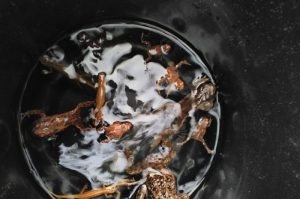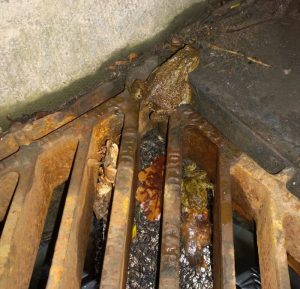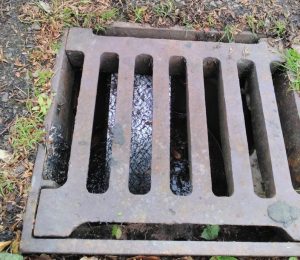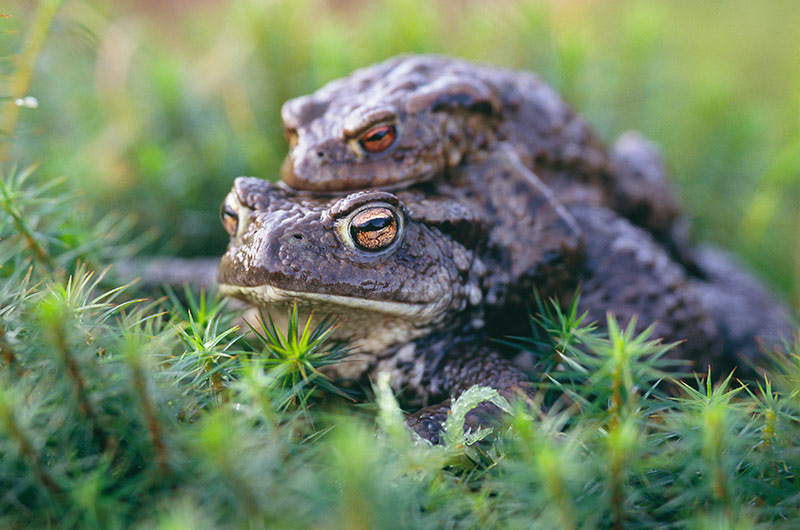A Solution to Death Traps in Suburbia – Guest Blog
Unfortunately many of our amphibians get trapped in our drains. Learn how Steve Hull is finding a solution to death traps in suburbia.
On many mild nights from March to November frogs, toads and newts fall into deadly gullypots in their thousands to endure a slow, lingering death.
Having evolved over millions of years in a world without roads, kerbs, drains, walls, houses, and manicured gardens, they hop and crawl from their tiny oases. These oases consist of ponds and wild vegetation. They venture out in search of food, hibernation sites, and breeding areas.
Why do they end up in drains?
Their nightmare usually starts when they fall down a kerb. They will usually follow the kerb, assuming that it will come to an end eventually. After all, no natural landscape feature would be so uniform. It also gives them a slight sense of security, particularly with street lights. So they don’t usually feel any particular urge to climb back up.
Soon they will arrive at a gullypot or drain, as it is often called and will try to continue in the same direction. If it is a standard gully pot set right up to the kerb, “plop” down they go to starve or die from pollution.
Other reasons that they go down are when they get caught out in the open when daylight arrives. They would become easy meat for diurnal predators (e.g. Corvids or Gulls). Therefore, in search of safety, they go down the drains. Also when dry conditions make them desperate for moisture. Sometimes, they probably go down because it looks like a promising hibernation site in the autumn.
According to those who have studied colonies of amphibians, they generally disappear eventually when new housing estates go in, as they just can’t keep up with the increased mortality.

Rescued amphibians – Steve Hull
Raising awareness is key!
Many people are unaware that toads, frogs and newts are even found in their locality as they keep such a low profile.
I’ve rescued them with a net for years and taken them to where I think they would best like to go. This is according to the species, time of year and other factors, but it’s rather a losing battle as there are so many drains. Recent single missions have rescued 23 newts in Woodside Park, 18 toads. 1 frog and 1 newt in a road in Findhorn. And 10 toads in Lochview, and that’s not even in the breeding season.
A solution to these death traps in Suburbia
Much could be done at the planning stage of new developments with the use of dropped kerbs in key areas, gully pots set back from the kerbs. Alternatives to gully pots, SuDS have the added advantage of keeping excess water local. In storms, it doesn’t overflow from the gully pots into the sewage systems, overwhelming them and forcing or encouraging untreated sewage into many rivers and also the sea. Other alternatives are special mesh ladders for amphibians. And specially constructed hibernation sites or hibernacula to obviate some of their need to travel so far.
There are loads of different hibernacula designs. You might like to Google amphibian hibernacula to see what suits your situation and available materials if you get the urge to build one. Generally, the bigger the better. But you will notice that some are built entirely above ground, and some half underground.

Ladders are a great solution to death traps in suburbia – Steve Hull
Amphibians are important
Amphibians can drown if they find themselves in saturated and oxygen-depleted areas. Even though they can breathe underwater where there is plenty of oxygen. Due to that, the completely above ground hibernacula are for areas prone to flooding and ground saturation. Whereas, the partly underground ones are for well drained areas. I’ve constructed three in my garden in well drained areas to make use of the extra space underground.
They are an important part of the ecosystem and human health. Amphibians can help control invertebrate populations, contribute to nutrient cycles, and their sensitivity to pollution makes them valuable bioindicators. Their ancestors got through the mass extinction 65 million years ago when the comet struck, but whether or not they survive us is up to us.
Spread the word
Awareness of the situation needs to be spread, particularly amongst property developers and councils; otherwise, yet another part of our diminishing fauna will disappear.
What a community in Moray are doing
We have recently installed amphibian ladders in some gullypots around Moray. These were kindly paid for by Moray CAN and supplied by Trevor Rose of the British Herpetological Society. These are expected to last longer than those we have installed in the past and be easier for amphibians.

A ladder inside the gully pot – Steve Hull

Adding ladders to our drains, is a simple solution to the death traps in suburbia - Image by Trevor Rose



